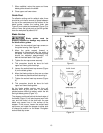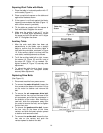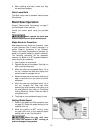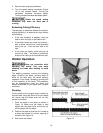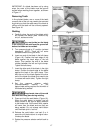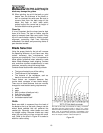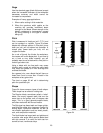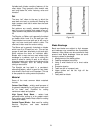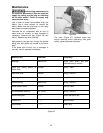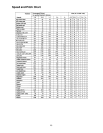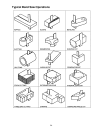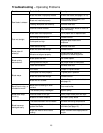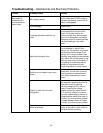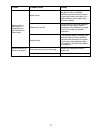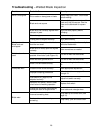
21
Variable-tooth blades combine features of the
other styles. They generally offer smooth cuts
and long blade life, while reducing noise and
vibration.
Set
The term “set” refers to the way in which the
saw teeth are bent or positioned. Bending the
teeth creates a kerf that is wider than the back
of the blade.
Set patterns are usually selected depending
upon the type of material that needs to be cut.
Three common set patterns are shown in Figure
25.
The Regular, or Raker, set is generally furnished
on blades which have 2 to 24 teeth per inch.
These blades have one tooth set to left, one to
right, and one unset tooth called a raker. The
raker set is often used for contour cutting.
The Wave set is generally furnished on blades
which have 8 to 32 teeth per inch. This set has
groups of teeth bent alternately to left and right,
which reduces the strain on individual teeth.
Blades with a wave set are used where tooth
breakage is a problem, such as in cutting thin
stock or where a variety of work is cut without
changing blades; also when the thickness of the
workpiece changes, such as cutting hollow
tubing or structurals.
The Straight set has teeth in a consistent,
alternating pattern, which is good for fast, basic
cuts where a fine finish is not important. This set
is also popular for cutting wood and plastics.
Material
Some of the most common blade materials
include:
Carbon Steel Blade – widely used because of
its general adaptability for all types of work and
for its lower cost. Excellent for cutting
nonferrous metals and plastics.
High Speed Steel Blade – resists heat
generated while cutting to a far greater extent
than carbon steel blades. Best suited for cutting
nonferrous metals.
Carbide-Tipped Blade – Best used for cutting
titanium, beryllium, and case hardened
materials.
Figure 25
Blade Breakage
Band saw blades are subject to high stresses
and breakage may sometimes be unavoidable.
However, many factors can be controlled to help
prevent most blade breakage. Here are some
common causes for breakage:
1. Misalignment of the blade guides.
2. Feeding workpiece too quickly.
3. Using a wide blade to cut a short radius
curve.
4. Excessive tension.
5. Teeth are dull or improperly set.
6. Upper guides are set too high off the
workpiece.
7. Faulty weld on blade.



